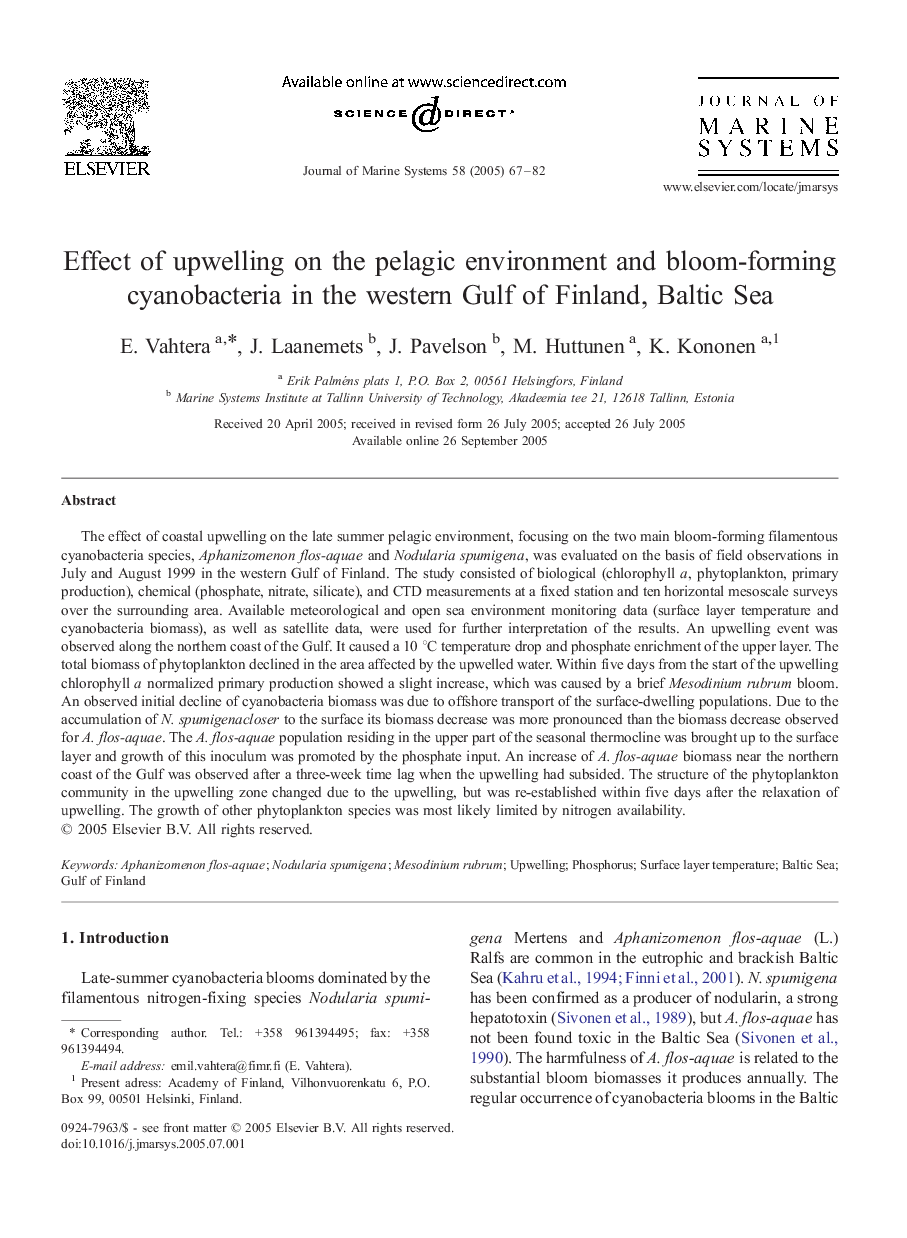| Article ID | Journal | Published Year | Pages | File Type |
|---|---|---|---|---|
| 9483419 | Journal of Marine Systems | 2005 | 16 Pages |
Abstract
The effect of coastal upwelling on the late summer pelagic environment, focusing on the two main bloom-forming filamentous cyanobacteria species, Aphanizomenon flos-aquae and Nodularia spumigena, was evaluated on the basis of field observations in July and August 1999 in the western Gulf of Finland. The study consisted of biological (chlorophyll a, phytoplankton, primary production), chemical (phosphate, nitrate, silicate), and CTD measurements at a fixed station and ten horizontal mesoscale surveys over the surrounding area. Available meteorological and open sea environment monitoring data (surface layer temperature and cyanobacteria biomass), as well as satellite data, were used for further interpretation of the results. An upwelling event was observed along the northern coast of the Gulf. It caused a 10 °C temperature drop and phosphate enrichment of the upper layer. The total biomass of phytoplankton declined in the area affected by the upwelled water. Within five days from the start of the upwelling chlorophyll a normalized primary production showed a slight increase, which was caused by a brief Mesodinium rubrum bloom. An observed initial decline of cyanobacteria biomass was due to offshore transport of the surface-dwelling populations. Due to the accumulation of N. spumigenacloser to the surface its biomass decrease was more pronounced than the biomass decrease observed for A. flos-aquae. The A. flos-aquae population residing in the upper part of the seasonal thermocline was brought up to the surface layer and growth of this inoculum was promoted by the phosphate input. An increase of A. flos-aquae biomass near the northern coast of the Gulf was observed after a three-week time lag when the upwelling had subsided. The structure of the phytoplankton community in the upwelling zone changed due to the upwelling, but was re-established within five days after the relaxation of upwelling. The growth of other phytoplankton species was most likely limited by nitrogen availability.
Keywords
Related Topics
Physical Sciences and Engineering
Earth and Planetary Sciences
Oceanography
Authors
E. Vahtera, J. Laanemets, J. Pavelson, M. Huttunen, K. Kononen,
